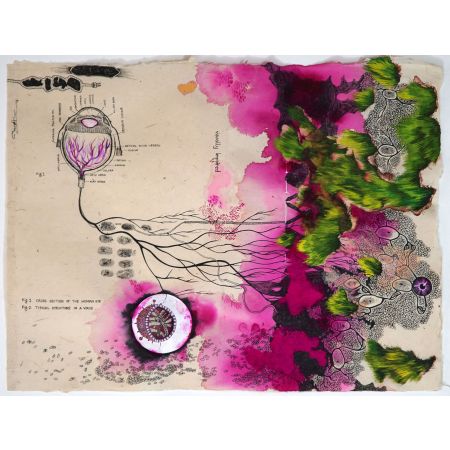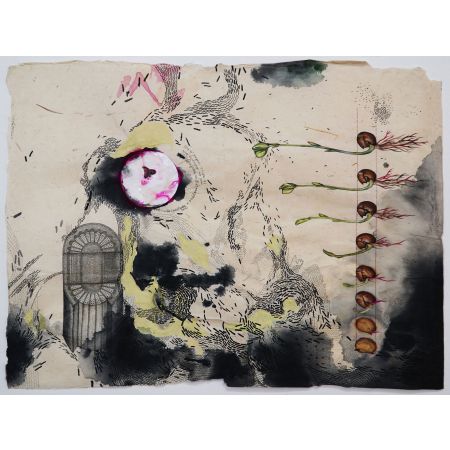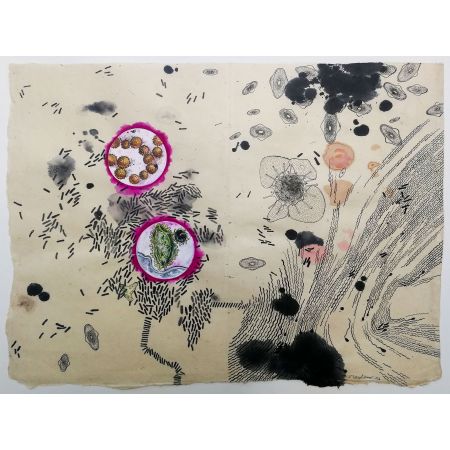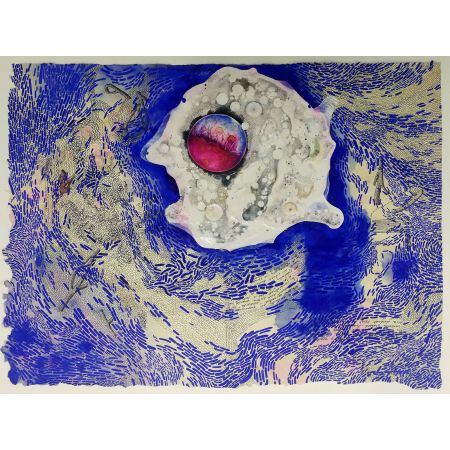Pink Placta
The work investigates the use of pesticides and genetically modified crops leading to the health devastation of inhabitants of the Punjab region. It focuses on the social, political, ethical and environmental implications of the green revolution introduced in the 1960s and 1970s in the light of the 21st century.
These drawings are an interface between art and science that explores how nature and humans adapt to changing and sometimes hostile environment. Each work in the series takes the form of a cell in an organism, the elements of which are further replaced by narratives from everyday life to depict the politics of food, health and disease. The viewer’s eye moves in different macro and micro layers as the size of the elements used in the works vary from their original scale.
The images pertaining to the microbial world transcend their biological anchor to the phenomenological purpose which becomes testimonies of the dark inner lives of the local inhabitants.
The pink in the works refers to P for Pink, P for Poison, P for Pesticide and P for Population. The bright color pink is used to pronounce the urgency prevalent in the food that we eat and the environment in which we live and breathe.
Return Policy: Available
Authencity Certificate : Provided
Shipping Duration: Within 7 days In India.
Shipping charges: Free Across India.
International Shipping at nominal charges. Shipped Rolled.
International Shipping at nominal charges. Shipped Rolled.
₹200,000






